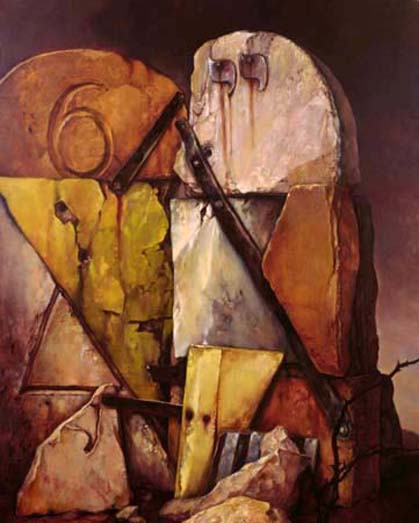 I had a dream a week or so back.
I had a dream a week or so back.
It wasn’t particularly odd. I didn’t feel like I was somehow out of place and didn’t recognize my surroundings. I had no strange abilities. No, it all seemed very normal. In fact, I was still a painter in this dream.
The gist of the dream was that I feeling a bit down about my work. Then out of the blue I received a phone call from a person identifying themselves as the editor of a large national magazine who wanted to do a story on my work. I was excited in the dream, as would be expected.
The dream ended with me asking what this magazine was that so wanted to do a big story on my work.
The voice on the other end replied, “Finger Painting Magazine.”
I woke up at that point and I began chuckling in the darkness.
My big break!
Womp womp.
I thought about that dream again yesterday. It still made me chuckle but I thought maybe I should try painting without a brush, using only my fingers, at least once. Maybe there is something to this finger painting stuff.
So I grabbed a canvas and got at it. I decided that I should keep it simple while I work on my strokes so I went with my most basic of compositions. Sky. Ground. Path. Red Roof.
Using only my fingers definitely gave it an immediacy and excitement. The piece changed quickly with a smear here and a daub there. The quickness of the process seemed to require more boldness. I used a couple of higher toned colors in more prominent roles than I normally would when using a brush. And I think it worked in this piece.
I began to realize that my hand was a combination of many brushes. Each finger had its own size and quality so there five brushes right there. Putting two or three fingers together made a couple more. And my palm was a broad brush as well.
Actually, as I got toward the finish of the painting I began to realize it didn’t look much different than my normal work. A little more ragged on the straight edges but that is not necessarily a bad thing. And it was not as messy as you might think. I actually ended up with less paint on my hands than I normally do when using a brush.
Maybe I have been wasting my time with brushes.
I did a little research this morning. There is no Finger Painting Magazine but there are several painters who use only their fingers. Some are quite striking and one was written about in an article I remember seeing not too long ago. She paints icebergs and other frozen landscapes on a grand scale. Great work.
Maybe there should really be a Finger Painting Magazine.





























